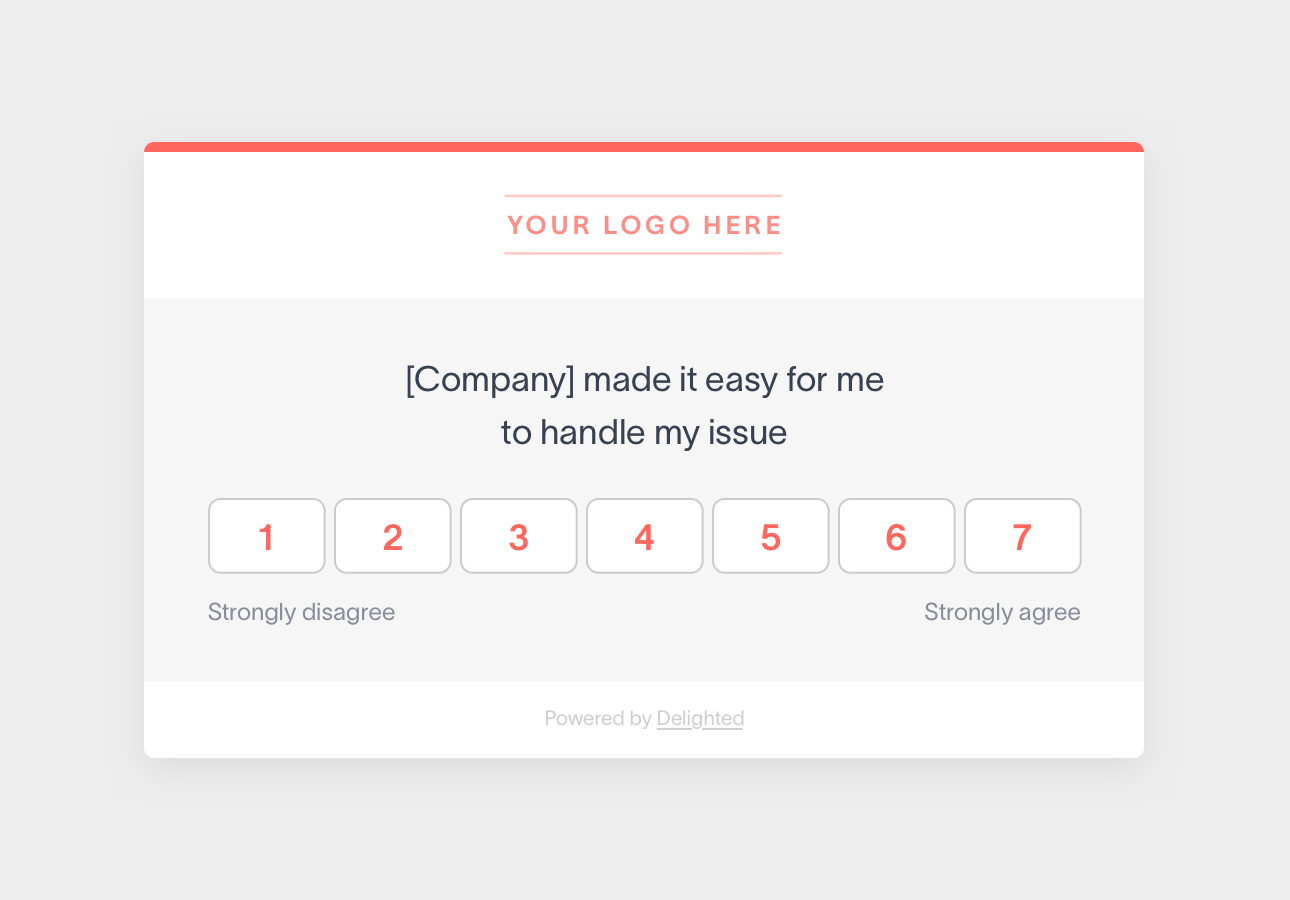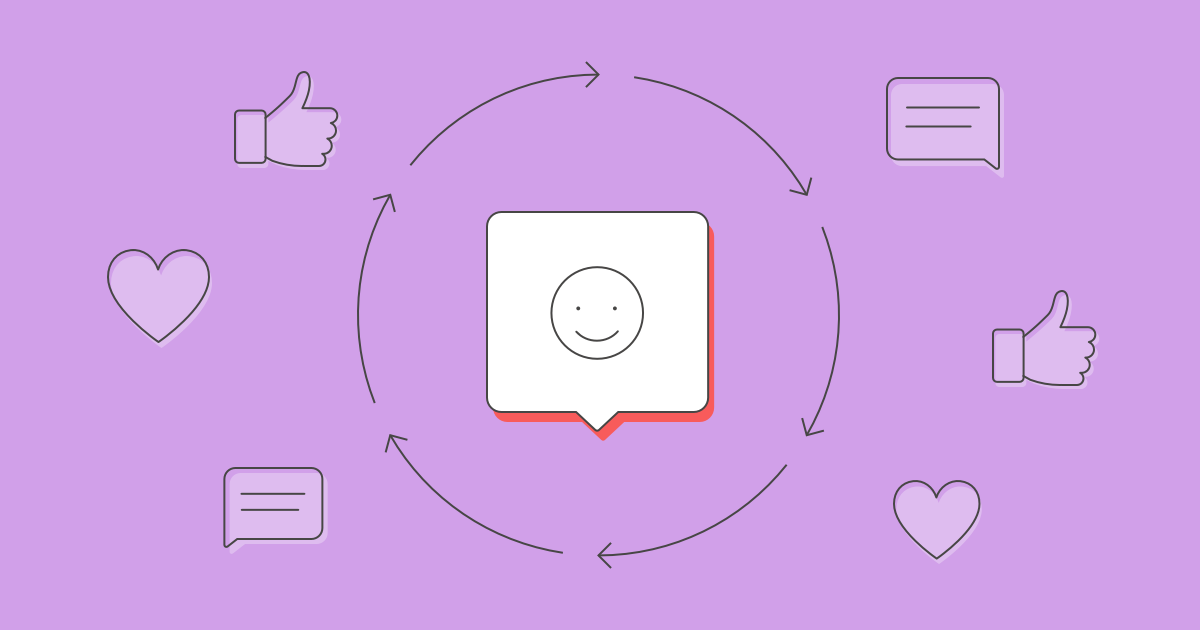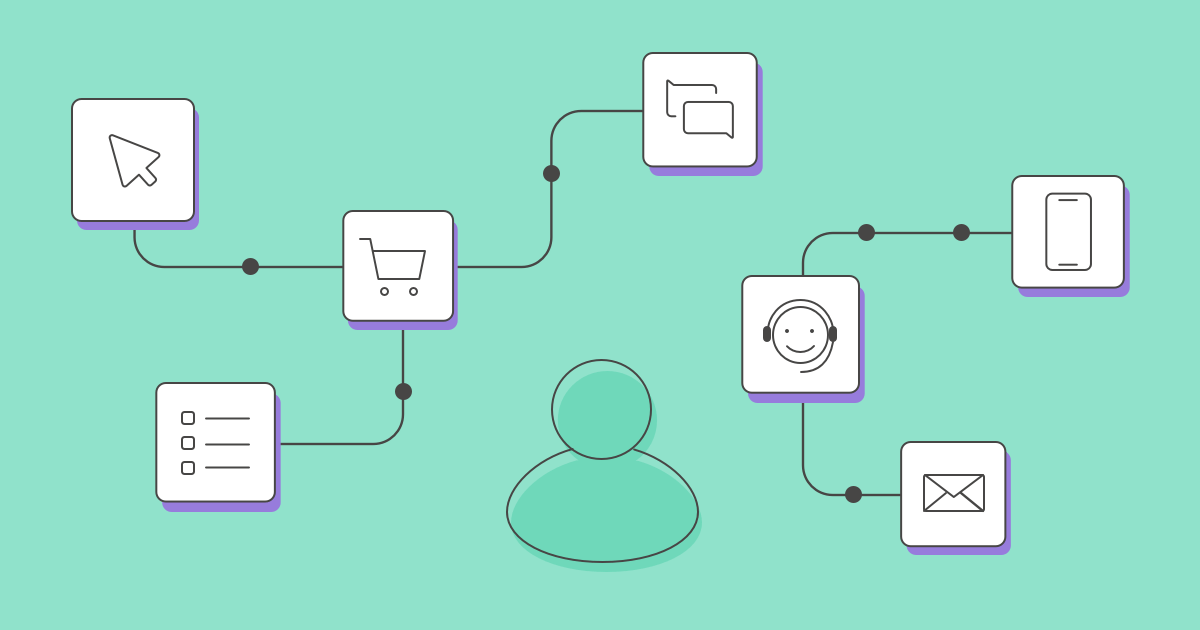Historically, the concept of “customer experience” has been seen as purely the responsibility of customer support. Today, this couldn’t be more inaccurate.
In the past, customer experience was whether or not the support rep on the phone or the attendant managing department store returns — or any other gatekeeper of company protocol — could help you amend a product related issue. “Customer experience” was strictly customer service-driven and incredibly retroactive — something that was only monitored or addressed post purchase.
While problem solving, or customer support, is an integral part of customer experience, it does not entirely reflect today’s modern, more proactive definition of customer experience.
Therefore, although related, we’ll explore the differences between these two concepts and how successfully implementing today’s approaches to both customer service and customer experience matters to your business.
Does customer experience increase revenue?
According to Forbes, the answer is a resounding ‘yes’ with over 70% of customers saying that they would spend more to get great customer service.
Moreover, 73% of consumers claim that a great customer experience drives their buying decisions while statistics show that increasing your repeat numbers by 5% can increase your profitability up to 95%.
What is customer service?
CustomerThink defines customer service as: “Help and advice provided by a company to the customers who are buying or using their products or services. Customer service could be classified as an area of customer experience. It is, however, a key area. And at its core, its role is to provide support.”
In other words, today’s definition of customer service is reactive in nature.
However, it wasn’t always that way, which is why customer support and experience could have been seen as more or less interchangeable. For example, a mere 10-20 years ago, a customer service rep might be needed to complete a basic transaction or share features and benefits to make a sale.
Flash forward to today’s tech-driven self-service economy and 70% of customers expect to be able to “help themselves” on a company’s website or application. Even if they have a problem with a product, 50% expect to find troubleshooting help online instead of contacting customer care.
Because of this, over half of the customer journey is now automated online in most industries. We live in a self-service time. People will definitely complain if they can’t “get a person on the phone” when they need one. But they rarely reach out to a customer contact center unless there’s a problem that can’t be solved intuitively or with a few minutes of research.
Is customer service obsolete? Of course not. Is customer service of less value to your business? That couldn’t be further from the truth. However, it’s only a piece of what’s considered to be today’s definition of customer experience.
Today, you need both self-service support channels and a real human presence to deliver the overall customer service experience that people expect. Both services work together to create value for a customer during a support scenario.
But why did your customer contact customer service in the first place? This takes us to our next point and a more thorough look at the proactive attributes that define the modern customer experience.
What is customer experience?
The Harvard Business Review defines customer experience as, “the sum of all interactions a customer has with a company.”
Customer experience isn’t just a single event with your best (or worst) customer care professional when an order is delayed. Today’s definition of customer experience (CX) spans the entire customer journey from the moment they become aware of your business or brand. The customer experience includes every aspect of the customer lifecycle, from pre-sales customer touchpoints all the way through personalized experiences for return customers.
In short, customer experience goes beyond the reactivity of customer service. Customer experience is when a brand proactively influences their customers’ perception of their entire customer journey.
Just how proactive is modern CX and how does it make its way into every facet of the customer journey? The list below is a good start for grasping exactly how brands can influence customer experience from discovery to repeat purchase:
- Social media presence
- Ease of navigation through the website, app, physical store, etc.
- Methods of communication and availability
- Product offerings and features
- Pricing options
- Checkout and delivery
- Reliability and consistency of customer support for both the buying process and post purchase
- Perks about relevant happenings, workshops, the latest trends, and special offers
- Customer loyalty rewards
- Addressing customer feedback and managing your reputation
CX requires companies to actively build customer experience into every customer-facing activity or service. Additionally, managing customer experience means leveraging tools, like Delighted, to measure which areas of your business are delivering worse or better-than-expected CX results and probing into what exactly is driving those results.
Difference between customer service and customer experience
To recap, the difference between customer service and customer experience is simple: customer service is a single event within the customer journey when the customer reaches out for support, and customer experience refers to all the interactions a customer has with your brand.
Though different in definition, customer service and customer experience can work together in a variety of ways.
Although customer service is only part of the CX equation, the feedback captured via customer service as a touchpoint can reveal a lot about the health of your CX strategy and your customers’ perception of the experience you provide.
For example, support reps are exposed to high volumes of both qualitative and quantitative feedback by working closely with customers to solve their most pressing issues. If managed correctly, the information collected by customer support can be an incredibly valuable tool for improving customer experience.
In many cases, the type of information collected by customer service reps can provide valuable insight into improving the overall CX of many aspects of your brand including:
- How to streamline your offerings. Eliminate products and services that have quality issues or fix the problems.
- How to optimize your brand message to meet customer expectations
- How to improve customer support experiences
Analyzing customer service feedback also sheds light on potentially serious product or service-related issues before they become detrimental to your reputation.
A commitment to customer experience delivers best-in-class customer service
Let’s face it: customer service reps and other members of support are buried deep in the trenches of customer complaints and more-often-than-not negative customer feedback. It’s a tough gig for sure, but it becomes exponentially more difficult when the feedback they collect is not accounted for or used to solve these issues at a product, service, or strategy level.
Companies that proactively incorporate support feedback into their overarching CX strategy create a culture of empowerment throughout their support team. Not only do reps feel like the time they spend helping customers with specific issues is more valuable, they also see their role for what it really is — an extremely important component of customer experience and added brand value.
Moreover, incorporating feedback collected by your customer service team can lead to some impressive quantifiable results:
- Average handle time decreases
- Fewer repeat calls
- Call volume becomes more manageable
- Hold times reduce
- Opportunities to collect positive CSAT and NPS from happy customers increase
- Employee morale stays high, reducing turnover
Understanding the whole customer experience picture
Another difference between customer service and CX is that customer experience needs to be incredibly tactical to handle all its moving parts. The first step in improving CX and managing its many components is to benchmark the aspects of CX that matter most. A great way to start doing this is with these three standardized customer experience metrics for measuring customer sentiment: CES, CSAT, and NPS.
CES and CSAT surveys
Let’s start with a Customer Effort Score (CES) survey. This is an essential customer experience metric measured by asking customers to rate you on just one thing: ease.

Measuring customer effort with one question is a simple way to collect feedback on an area that matters most to your team.
The Customer Satisfaction Score (CSAT) survey follows the same principle. But it focuses on satisfaction instead of ease. In either case, keep it simple by measuring customer experience one specific touchpoint at a time. Here are a few steps to get you started:
- Outline your many touchpoints & prioritize. Create your CES or CSAT surveys for the touchpoints you decide to target.
- Automate surveys based on transaction type so that customers receive them at the best time. Send surveys through methods to which your customers respond: Email, website, or via a link. Identify areas where you need to improve.
- Seek additional information from customers and your customer service team, when needed. eBay selects specific sellers who receive a message like this in their inboxes. “You’ve been specially selected to help us improve our customer experience. Please complete this 1-2 minute survey and share your thoughts about….”
- Gather that feedback and develop a plan.
- Execute your customer experience enhancement action plan.
- Continue to measure your results using CES or CSAT surveys.
NPS surveys
Transactional surveys like CES and CSAT measure customer service and specific elements of customer experience. How do you examine the brand equity of your business that you’ve built over time? With Net Promoter Score (NPS).
Net Promoter Score (NPS) surveys measure how your customer experience impacts loyalty. Like CES and CSAT, it’s best to keep these surveys simple. For example:
- “How likely are you to recommend ABC Company?”
Customers answer on a scale of 0-10, which is then used to calculate your NPS score. Measure it over time, and watch how it moves in direct relation to things like revenue, profits, employee satisfaction and inversely to other measures like returns, recruitment costs, turnover.
Further explore the difference between transactional and relationship surveys and see how they work together like customer service and customer experience.
Conclusion: Customer experience vs customer service
It’s important to understand the relationship between customer experience and customer service. Customer service is a very important part of the broader customer experience. The role of customer service has changed a lot as we’ve entered a self-service era. But your customer service teams are still vital in that they manage the exceptions and gather valuable data about customer experience.
It’s important to track not only how customers experience your customer service team. You need to know how they experience the entire customer journey, at every major touchpoint. CES, CSAT, and NPS surveys are three vital types of surveys that help you quantify customer experience in both the short and long term.
To start collecting actionable feedback from customers in order to delight them every step of the way, explore our customer survey templates today.




